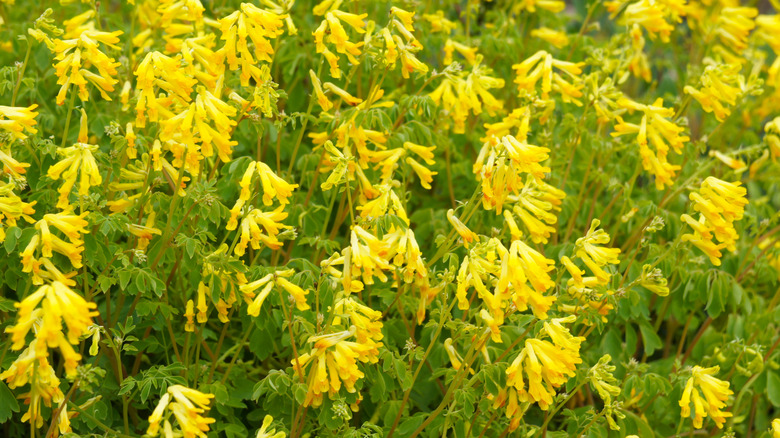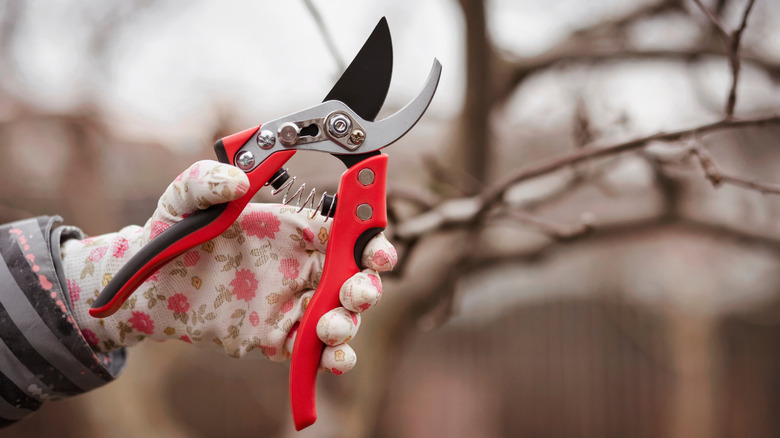The Pruning Tip For Corydalis Flowers That Prevents Them From Self-Seeding
Set your garden up for success by mastering one small pruning habit that can make all the difference for your corydalis (Corydalis lutea) flowers. These flowers are one of the many perennials that bloom with bright yellow flowers, but they have a habit of spreading fast. Once the blooms fade, the plant quickly forms seedpods that burst open and scatter seeds wherever they land. Over time, that can turn a few plants into a thick carpet of self-sown seedlings. The simple fix is to deadhead, which requires snipping away faded blooms before pods can mature.
Native to the southern Alps of Europe, corydalis is hardy in USDA Zones 4 to 8, preferring moist, well-drained soil and partial to full shade. In cool, damp areas, it can bloom until frost, filling gardens and growing on rock walls with its fernlike, blue-green foliage and tiny tubular flowers. It may be hardy, but it's also vigorous, and when left alone, these summer and fall-blooming flowers will thrive in shady areas of your garden, reseeding so freely that they're often described as "aggressive."
Deadheading isn't just about neatness — it's about plant health. Faded flowers pull nutrients away from new growth as the plant diverts energy into seed formation. Snapping or cutting off old flower stems below the first healthy leaves redirects that energy toward more blooms and stronger roots instead. When done regularly, this practice can transform a potential nuisance into a bloom that works for any shade garden.
How to stop corydalis from self-seeding through deadheading
To keep corydalis from scattering seed, timing is the most important thing. The best moment to deadhead is as soon as flowers fade, but before the slender seed capsules begin to form. Clip or pinch the entire flower stem just above a set of healthy leaves, taking care not to remove new buds forming nearby. Regular checks through summer (where it blooms the longest) will prevent the plant from setting seed while keeping it in active bloom. Gardeners who skip this step may find corydalis popping up between stones, under shrubs, and in unexpected corners later on in the year.
By taking away the flowers as soon as they fade, the plant is encouraged to grow new buds rather than starting seed production. In regions where summers are mild and moisture is steady, the plant might even bloom continuously until frost, offering months of vivid color. A few missed seedpods can still result in an abundance of seedlings the following year because corydalis self-sows easily, so don't worry about deadheading "too much."
In places where spreading is welcome — such as along stone walls or naturalized beds — you may choose to leave a few blooms to go to seed intentionally. Gardeners looking for year-round color should consider corydalis one of the best companion plants to grow alongside your hostas. To ensure they're controlled, deadheading after the main flush of flowers will prevent unwanted seedlings and encourage their beauty to bloom.

